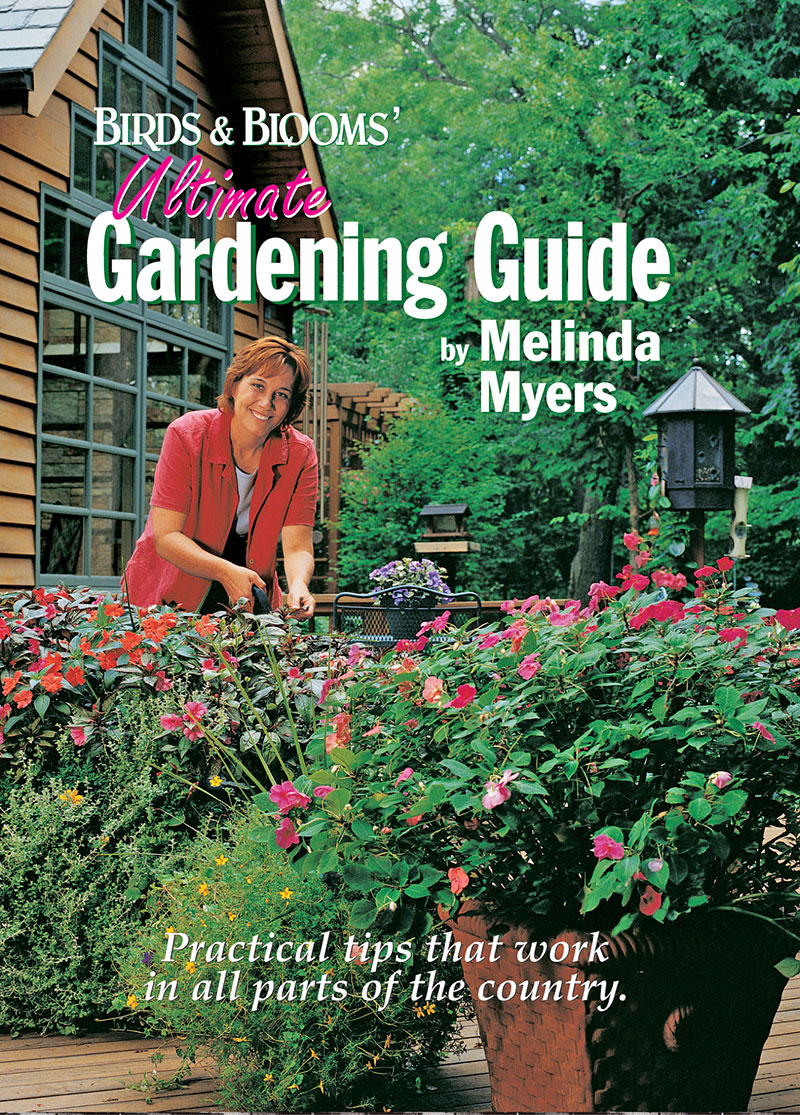
August
Flowers & Ornamental Grasses
Flowers & Ornamental Grasses
- August is usually the hottest, driest month of the summer. Check all plantings for moisture stress. New plantings and moisture-loving plants are your highest priority.
- Consider using a watering wand or drip irrigation system to water the soil without wetting the foliage. Always water thoroughly to encourage deep, more drought tolerant roots.
- Fertilize container plantings in need of a nutrient boost.
- Monitor gardens for brown leaf edges, a symptom of scorch. Pay special attention to hostas and other shade lovers growing in the sun. Water is not always the solution.
- Watch for heat stall in the garden. Alyssum, lobelia, snapdragons, pinks and French marigolds are a few annuals that stop flowering during extremely hot weather.
- Plan on replacing weatherworn annuals with fall and winter (for those in milder climates) bedding plants. Purchase pansies, kale and other cool season annuals to spruce up the garden
- Deadhead annuals for continual bloom and beauty. Pinch back leggy annuals to encourage branching and more flowers.
- Deadhead late season perennials for aesthetic reasons and to prevent unwanted reseeding.
- Plant autumn crocus and surprise lilies now through early September or as soon as the bulbs are available.
- Southern gardeners can sow seeds of fast growing annuals like marigolds and zinnias or cool season annuals like calendula, snapdragons and stocks for the fall and winter garden, if your weather allows.
- As temperatures cool, you can begin digging and dividing any overgrown and crowded iris and other spring-blooming perennials.
- Replenish mulch around flowers. Maintain a 1- to 2-inch layer of organic mulch, but do not bury the crowns of the plants.
- Do not fertilize your perennials. Late season fertilization encourages late season growth susceptible to winter damage.
- Northern gardeners should try cutting back short-lived perennials, such as blanket flower (Gaillardia) and pincushion flower (Scabiosa). This eliminates late season blooms, but increases winter hardiness.
- Take cuttings of annual vinca, geranium, coleus and other annuals for a little added color indoors over winter.
- Keep pulling weeds and removing insects and diseased leaves as soon as they are discovered. Do not compost pest-infected plant material, perennials or annual weeds that have gone to seed.
- Check the upper and lower leaf surfaces and stems of plants for aphids and mites. These pests suck out plant juices, causing leaves to yellow and brown.
- Capture and destroy slugs eating holes in the leaves of hostas and other shade lovers.
- Continue to remove and destroy Japanese beetles if control is desired.
- Remove aster yellows-infected plants to reduce the spread and future infections. Infested plants have green petals, distorted leaves and misshapen flowers.
- Check zinnias, begonias, bee balm, phlox and other flowers for powdery mildew. Clean up mildew plant debris this fall and consider replacing susceptible plants with mildew-resistant varieties.
- Deer and rabbits continue to feed on garden plants. Repellents, fences and scare tactics may provide some relief.
Fruits, Vegetables & Herbs
Fruits, Vegetables & Herbs
- Consider using a watering wand or drip irrigation system to water the soil without wetting the foliage. Always water thoroughly to encourage deep, more drought-tolerant roots.
- Keep planting seeds and transplants of vegetables that can be harvested before the first fall frost.
- Plant garlic cloves now to harvest next summer.
- Warmer temperatures speed ripening, so monitor and harvest vegetables regularly for the best flavor and greatest productivity.
- Harvest garlic when the leaves turn yellow.
- Dig onions when the tops fall over and begin to dry.
- Pick peppers when the fruit are firm and full sized.
- Harvest tomatoes when they are fully colored. Leave on the vine for an extra 5-7 days for a sweeter flavor if critters aren’t a problem.
- Remove summer squash when the fruit are 6 to 10” long or scalloped types when they are 3 to 6” in diameter.
- Harvest cucumbers based on their use. Pick sweet pickles when 1 ½ inches, dill 3 to 4 inches and slicers 6 to 8 inches long.
- Harvest potatoes for storage as the tops die and tubers reach full size. Dig carefully to avoid damage.
- Harvest herbs as needed.
- Harvest blueberries when they are fully colored, sweet and juicy. Like other berries, store them in shallow containers to prevent crushing the fruit.
- Monitor peaches and plums for ripeness. Harvest when the fruit is fully colored, sweet and juicy.
- Harvest elderberries throughout the month. Taste the fruit to check for ripeness. Pick when the berries are fully colored and juicy.
- Start harvesting apples just before they are fully mature.
- Pick pears before they turn yellow and fall to the ground.
- Fertilize June-bearing strawberries in early August.
- Prune raspberry canes that bore fruit in summer as well as diseased, insect-infected and damaged stems to ground level.
- Don’t be discouraged if your first few tomatoes are black on the bottom. Blossom end rot is caused by a calcium deficiency that is often the result of moisture stress. Just cut away the black portion and eat the rest.
- Check the lower leaves of tomatoes for yellowing and brown spots caused by septoria leaf spot and early blight. Remove and destroy infected leaves as soon as they are found. Fall cleanup, proper spacing, staking and full sun will reduce the risk of these diseases.
- Monitor squash, melons and other vine crops for powdery mildew. Clean up mildew plant debris in fall and further reduce the risk next year with proper spacing and weed control.
- Elevate pumpkin, squash and melon fruits off the ground to prevent rot.
- Check the upper and lower leaf surfaces and stems of plants for aphids and mites. These pests suck out plant juices, causing leaves to yellow and brown.
- Remove and destroy cucumber beetles, Colorado potato beetles and cabbage worms as soon as they are found.
- Monitor and control squash vine borers as needed.
- Keep picnic beetles out of the garden with regular harvesting and disposal of overripe fruit.
- Prepare to extend the growing season using cold frames, cloches and season-extending fabrics.
Groundcovers & Vines
Groundcovers & Vines
- Keep pulling weeds and removing insects and diseased leaves as soon as they are discovered. Do not compost perennials or annual weeds gone to seed or pest-infected plant material.
- Monitor gardens for brown leaf edges, a symptom of scorch. Pay special attention to hostas and other shade-loving groundcovers growing in the sun.
- Check the upper and lower leaf surfaces and stems of plants for aphids and mites. These pests suck out plant juices, causing leaves to yellow and brown.
- Capture and destroy slugs eating holes in the leaves of hostas and other shade lovers.
- Watch for leaf spot diseases. Remove and destroy infected leaves to reduce the risk of future infections.
- Check honeysuckle vines for powdery mildew. Clean up mildew plant debris this fall and consider replacing susceptible plants with mildew-resistant varieties.
Indoor & Holiday Plants
Indoor & Holiday Plants
- Fertilize actively growing indoor plants if needed or faster growth is desired.
- Reduce brown tips on spider plants, dracaenas and prayer plants by keeping the soil slightly moist. Or use rainwater, chemical-free dehumidifier water or distilled water for these plants.
- Find an area to quarantine houseplants as they move indoors. It should be in an area with good, bright light, but separate from your other indoor plants.
- Take cuttings of annual vinca, geranium, coleus and other annuals for a little added color indoors over winter.
- Bromeliads, including air plants such as Tillandsias, are easy-care plants that add fun and beauty to any indoor garden.
- Place a 5-gallon bucket under the faucet while waiting for the water to warm. Use this to water containers and houseplants.
Lawns
Lawns
- Continue to mow high and often to increase your lawn’s drought tolerance and pest resistance.
- Mid-August to mid-September is the best time to overseed, repair, replace or start a new lawn in the Midwest and north.
- Southern gardeners should avoid seeding and sprigging warm season grasses in late summer and early fall to avoid winter kill.
- Newly seeded lawns are often infested with rust that can leave your shoes orange when walking through the grass. Treatment is usually not needed.
- Lawn insects are more of a problem when the weather has been hot and dry. Continue monitoring for grubs, billbugs and chinch bugs.
- Skunks, raccoons, and moles can damage lawns when digging for grubs. Eliminate the food source and they will go elsewhere to dine.
Trees, Shrubs & Roses
Trees, Shrubs & Roses
- August is usually the hottest, driest month of the summer. Check all plantings for moisture stress. New plantings and moisture-loving plants are your highest priority.
- Reduce maintenance and improve plant health by creating large planting beds around trees and shrubs.
- Replenish mulch around established plantings of trees, shrubs and roses. Maintain a 2- to 3-inch layer of organic mulch, but do not bury the crowns or place mulch against tree bark.
- Add hardy shrub roses to your landscape now through early fall. These hardy low-maintenance roses can add year-round beauty to your landscape.
- Stop fertilizing your trees, shrubs and roses in August. This allows the plants to start preparing for winter.
- Check the upper and lower leaf surfaces and stems of plants for aphids and mites. These pests suck out plant juices, causing leaves to yellow and brown.
- Remove and destroy fall webworm, redheaded azalea caterpillars and bagworms as found.
- Check tree trunks for female gypsy moths. Remove the adult and egg masses as discovered.
- Deer and rabbits continue to feed on roses and other garden plants. Repellents, fences and scare tactics may provide some relief.
- Black spot may be causing significant damage to your roses by now. Do a thorough cleanup this fall.
- Remove and destroy virus-infected roses and shrubs to prevent it from spreading to healthy plants.
- Prune out diseased, cankered and discolored branches. Disinfect tools between cuts and save major pruning for the dormant season.
Categories
Upcoming Live Events
& Webinars
April 27, 2024
Ridges & Rivers Book Festival
Viroqua, WI
Register now
April 28, 2024
Flowering Trees and Shrubs
Ebert's Greenhouse Village, Ixonia, WI
May 1, 2024
FREE WEBINAR
Ornamental Fruits and Vegetables
Register now
May 4, 2024
Garden U 2024
New Richmond, WI
Register now
May 9, 2024
FREE WEBINAR
How to Plant Your Rain Garden
Register now
May 11, 2024
Ask The Plant Doctor Q & A
Ebert's Greenhouse Village, Ixonia, WI
May 12, 2024
Ask The Plant Doctor Q & A
Ebert's Greenhouse Village, Ixonia, WI
May 18, 2024
Ask The Plant Doctor Q & A
Ebert's Greenhouse Village, Ixonia, WI
June 1, 2024
Selecting, Planting, Pruning and Caring for Hydrangeas
Ebert's Greenhouse Village, Ixonia, WI
June 5, 2024
FREE WEBINAR
Under-Appreciated Pollinators
Register now
WATCH ON-DEMAND WEBINARS
Learn More










